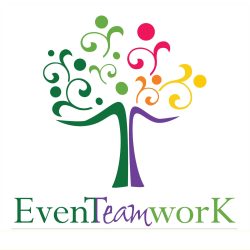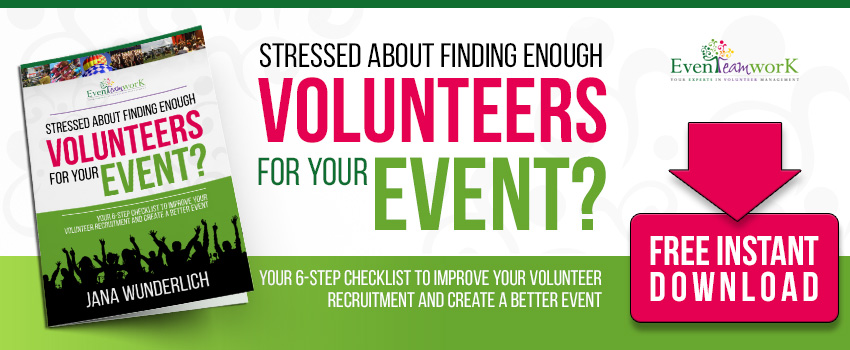Bringing a large-scale event to life that truly reflects your vision will always require buy-in from the various stakeholders involved. It can be very time intensive to manage competing stakeholders when running large-scale events and it can feel like you are being pulled in several different directions.
In this post you I’ll show you five easy steps to create a “lived vision” that will help pull everyone together and ensure that you get the best outcome for your event without always having to communicate separately with each stakeholder group.
Related content: Do you really know your event stakeholders?
Now, having a vision for your event is surely nothing new to you; however, having a lived vision is a step further. As the name implies, a lived vision is known and lived by all stakeholders. It also helps to easily attract more of the right people to your event – those who truly connect to your vision, and hence saves you valuable time while creating a bigger impact.
Managing competing stakeholder interests
Mitigating the great challenge of competing stakeholder interests means getting stakeholders to all work together towards your event’s success. Yes, they are all very different but the one thing that unites them is your vision for your event or organisation.
It is also much easier to manage these competing interests when you have your own cheer squad – or “A-team” of stakeholder ambassadors who share the vision for your event and can hence carry it through to their respective stakeholder groups.
Creating an “A team” with vision
The easiest way to create your own A-team is to share openly and honestly the vision you have for your event. For example, if you are running an event benefitting health, you will want to use language that is attractive to stakeholders who share a common interest in healthy communities.
This way you will pull together a small group of people across all stakeholder groups, who are most enthusiastic about your event. They will see their involvement as more than a transaction and they will help you engage all stakeholders. See them as your advisory panel and your cheer squad.
Regardless of the type of event or its purpose, your entire team will function more cohesively when united by common goals, and the same goes for all stakeholder groups. This calls for a clearly spelled-out vision at the centre of all your event planning, around which your A-team will rally and take everyone else along for the ride. Do this early!
Your event’s vision statement
Write up a single vision statement for your event. Leverage this vision statement to engage potential stakeholders around the common interest. Use this vision statement as the basis for a “pull strategy” designed to attract stakeholders who share your vision.
Often, event leaders create different visions for each stakeholder group, such as sponsors, staff, suppliers, volunteers. This segmentation limits the stakeholders. However, a well-articulated vision attracts people across all stakeholder groups to your event and you never know how people may want to get involved. For example, a ticket holder can also be donating and volunteering; they may also own a company and may be interested in sponsoring the event.
So, it’s important to not limit yourself; create a single vision of how you want your event to be perceived and what you want it to achieve – this alone will attract the right people once you share it.
Five simple steps to creating a lived vision statement
The best way to instil a sense of purpose in your stakeholders is to write a vision statement for your event and then help them to own it and share it. To do this, follow these five steps:
- Answer three questions to determine the value proposition of your event:
- What is the main purpose of the event?
- What type of person is this event for?
- What is their incentive for attending this event?
- Write a rough draft of your vision statement.
- Share the vision statement with your A-team of stakeholders for input.
- Write the final draft of your vision statement.
- Share your vision statement in all appropriate channels (website, local media, social media).
A vision statement is emotional; it’s about positive change. This is what people will connect to and that’s when it becomes a lived vision.
Health triathlon
Darryl (not his real name) belonged to a triathlon club and was tasked with organising a public triathlon.
Particular challenges
While Darryl had organised triathlons before, this was especially challenging as it was ‘tri-purpose’, which he delighted in telling people was appropriate for a triathlon club. Its purpose was:
- Increase the number of club members
- Raise funds for the local hospital’s oncology ward
- Raise fitness levels of the citizens of the half dozen or so suburbs that were his target
Finding his A-team
It was obvious that this was going to be a big, complex task and that planning would take the best part of a year and involve many volunteers. Fortunately, Darryl quickly recognised a small number of community members from various stakeholder groups who were as enthusiastic as he was – so these five people became his A-team.
Writing the vision
Darryl had written vision statements before, but it was crucial this time to formulate a single vision that would be relevant to all stakeholder groups: contestants, individual clubs (swimming, running, cycling), hospital auxiliary, sponsors, volunteers, race directors, coaches, team leaders, vendors, retail outlets, council staff, police, ambulance … the list seemed endless.
He liked the idea of a lived vision that would pull everyone together to ensure that he would get the best outcome for his event without always having to communicate separately with each stakeholder group.
He drafted and redrafted many versions of a vision statement that he felt would appeal to all of these groups, then finally felt ready to share it with his A-team.
Sharing it with his A-team and beyond
After some minor revisions by the A-team, the vision statement was finalised – less than a page of their why. This became the basis of some very effective advertising, including social media, television, newspapers, leaflets and posters.
(And yes, it was hugely successful. Darryl and his A-team were immediately booked for a repeat performance the following year.)
A vision for your A-team
Feeling stuck? Writing your own vision doesn’t sound as easy as it was for Darryl? You can always schedule a consultation with the team at Eventeamwork who can assist you in developing a lived vision for your event.
If you’d like to up-level your stakeholder engagement, download our free checklist “How to manage competing stakeholder interests when running large scale events”.












